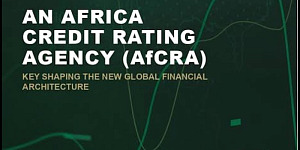Economic growth in Sub-Saharan Africa is rebounding in 2017 after registering the worst decline in more than two decades in 2016, according to the new Africa’s Pulse, a bi-annual analysis of the state of African economies conducted by the World Bank.
The region is showing signs of recovery, and regional growth is projected to reach 2.6% in 2017. However, the recovery remains weak, with growth expected to rise only slightly above population growth, a pace that hampers efforts to boost employment and reduce poverty.
Nigeria, South Africa, and Angola, the continent’s largest economies, are seeing a rebound from the sharp slowdown in 2016, but the recovery has been slow due to insufficient adjustment to low commodity prices and policy uncertainty. Furthermore, several oil exporters in the Central African Economic and Monetary Community (CEMAC) are facing economic difficulties.
The latest data reveal that seven countries (Côte d’Ivoire, Ethiopia, Kenya, Mali, Rwanda, Senegal, and Tanzania) continue to exhibit economic resilience, supported by domestic demand, posting annual growth rates above 5.4% in 2015-2017. These countries house nearly 27% of the region’s population and account for 13% of the region’s total GDP.
The global economic outlook is improving and should support the recovery in the region. Africa’s Pulse notes that the continent’s aggregate growth is expected to rise to 3.2% in 2018 and 3.5% in 2019, reflecting a recovery in the largest economies. It will remain subdued for oil exporters, while metal exporters are projected to see a moderate uptick. GDP growth in countries whose economies depend less on extractive commodities should remain robust, underpinned by infrastructure investments, resilient services sectors, and the recovery of agricultural production. This is especially the case for Ethiopia, Senegal, and Tanzania.
A stronger-than-expected tightening of global financing conditions, weaker improvements in commodity prices, and a rise in protectionist sentiment represent downside external risks to the outlook. On the domestic front, risks to the current recovery stem from an inadequate pace of reforms, rising security threats, and political volatility ahead of elections in some countries.
“As countries move towards fiscal adjustment, we need to protect the right conditions for investment so that Sub-Saharan African countries achieve a more robust recovery,” says Albert G. Zeufack, World Bank Chief Economist for the Africa Region. “We need to implement reforms that increase the productivity of African workers and create a stable macroeconomic environment. Better and more productive jobs are instrumental to tackling poverty on the continent.”
The environment of weak economic growth comes at a time when the continent is in dire need of necessary reforms to boost investment and tackle poverty. Countries also have to undertake much-needed development spending while avoiding increasing debt to unsustainable levels.
In this environment, fostering public and private investment, notably in infrastructure, is a priority. The region experienced a slowdown in investment growth from nearly 8% in 2014 to 0.6% in 2015. The Africa’s Pulse report dedicates a special section to analyzing the region’s infrastructure performance across sectors, revealing dramatic improvements in quantity and quality of telecommunications contrasted by persistent lags in electricity generation and access.
“With poverty rates still high, regaining the growth momentum is imperative,” says Punam Chuhan-Pole, World Bank Lead Economist and the author of the report. “Growth needs to be more inclusive and will involve tackling the slowdown in investment and the high trade logistics that stand in the way of competitiveness.”
Overall, the report calls for the urgent implementation of reforms to improve institutions that foster private sector growth, develop local capital markets, improve infrastructure, and strengthen domestic resource mobilization.










































